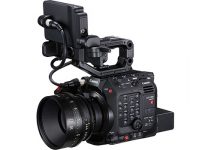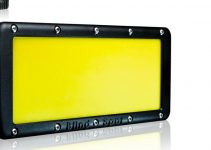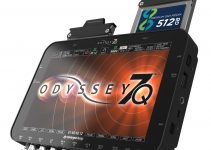A couple of months ago, on MAKE. ART. NOW. YouTube channel popped up an enticing video shot in the moonlight with a BMPCC 4K, a great camera that is surely not famous for its low light performance. How did Josh Yeo get away with that? Well, he used a quite unique lens, the Leica Noctilux 50mm f0.95.
Yes, you’ve read that right. The lens is a less-than-f1-aperture. And it has a very cool name too! What else could you want from a lens, right? What about having a well-focused image? It’s not a secret that most of the feature films are shot between T2 and T5, while many filmmakers that can’t afford to light properly the scene go for much faster apertures, granting more light but also higher chances of messing with focus.
Needless to say, the lens in question is quite expensive. Between the original lens cost and the re-housing of the barrel with the addition of the gears and other small details, we’re easily getting over the $15K mark.
It’s obvious that almost no one will buy such a lens to own it. It simply does not make sense financially (unless you’re some kind of lens collector with extremely deep pockets) but then again, in that case, it’s not a financial decision, it’s a collection. So, most filmmakers will turn to rent for such a specialty lens.
That’s not to say that renting such a beast is the only situation where you may have difficulties focusing. Even much cheaper lenses like the SLR Magic MicroPrime 50mm T1.2 will give you a headache while trying to nail the perfect focus.
Hollywood productions are used to rehearse scenes, set marks for the talents, and most of all, they have a dedicated person on set, usually the first AC, who has the job of pulling focus. But what if you’re a one-man band? An independent filmmaker on a small crew?
The first step is getting a motorized follow focus, something like the DJI Focus wireless lens control system. It does not have to be exactly that one, there are other combos with a follow focus like those in Zhiyun lineup, but DJI’s one is worth to mention for the speed and ease in setting up. Just a double click and you can set in and out points for the focus.
Step two. Get a monitor. A good one. There are a lot out there, bright or dull, with high resolutions or VGA, that can record on a card or on an SSD, you name it.
Feel free to choose the one you think fits better on your rig and in your wallet, on this specific occasion, Joe opted for the SmallHD Focus. It’s quite cheap and has an amazing zoom capability. Even too much to be honest, but you can bet you’ll always know where the focus is.
If you’ve got your gear ready and are on set, it’s time to shoot. Sometimes little attention while planning a shoot will make your life much easier later. If you have a shot list with the actor moving and the camera following, try to set up with the director a simple path for the actor, possibly parallel to the movement of the camera, so that the distance between the camera and the talent stays more or less the same, thus avoiding big changes in focus.
That is much more complicated to obtain when you have to shoot a closeup, though. In those cases, you better make a decision. Choose one element and keep that in focus, forget the rest. Actually, forget getting back and forth between elements in the shot, stick with one thing and go on. Usually, the best subject would be the eyes of the actor. The eyes are always the heart of the emotions, and an out of focus eye feels straight wrong.
If possible talk to the actor, make them move slowly, with no rushed changes of position, while you should try to move a little sideways, from left to right and back the other way, so to add movement to the shot and at the same time keep the same distance from the subject.
If instead you are moving far away from the subject keep in mind a basic rule that we all have learned at some point. The perception of the image from our eyes is such, that if the subject gets smaller and farther away in the shot, it appears that more of it is in focus. So try to make your subject stay far away from the camera and see if you can get the same story from a different point of view.
Closing up, after all the most important thing is to keep in mind where your content will be viewed. In fact, these images will seem all in focus and perfect if you are watching them on a small phone screen, but it’s a whole different story if you watch them on the big wide screen of a movie theater.
So, do your best, but do not forget that some of those perfect and amazing shots you’ve seen on that last music video may not in fact be so perfect as you thought.
[source: MAKE. ART. NOW.]
Disclaimer: As an Amazon Associate partner and participant in B&H and Adorama Affiliate programmes, we earn a small comission from each purchase made through the affiliate links listed above at no additional cost to you.




